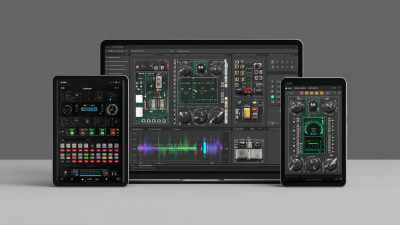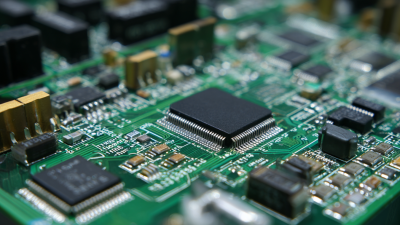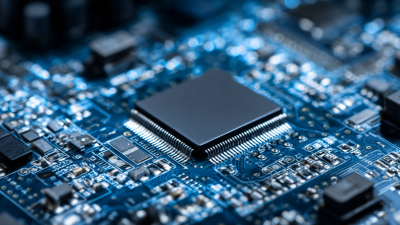30+ Years of Experience in PCB Design and Manufacturing
In the fast-paced world of electronics, the demand for quicker and more efficient prototyping has never been greater. Enter pcb design software, a groundbreaking tool that is transforming the landscape of electronic design. This software allows engineers and designers to streamline their workflow, significantly reducing the time needed to create functional prototypes. By automating complex tasks and enhancing collaboration among team members, pcb design software not only accelerates the prototyping process by up to 20%, but also empowers innovation in product development.

As we delve into the various features and benefits of this essential tool, we'll explore practical tips and strategies for leveraging pcb design software to unlock unprecedented levels of creativity and efficiency in electronics design. Embracing this technology is not just a step forward; it's a leap into the future of electronic engineering.
The rise of PCB design software is fundamentally transforming product development, enabling electronic engineers to streamline their workflows and bring products to market faster. By replacing manual design processes with advanced, physics-driven software solutions, organizations can significantly reduce time-to-market, with some reports indicating up to 20% faster prototyping. These tools not only enhance efficiency but also minimize costly delays associated with traditional designs, which can lead to millions in lost revenue.
Tips: When incorporating PCB design software into your workflow, ensure that your team is trained on the latest tools to make the most of their capabilities. Additionally, utilize simulation features within the software to catch potential issues early in the design process, saving time and resources down the line.
As the market for PCB design software continues to expand—projected to reach USD 12.11 billion by 2033—it's clear that these tools are becoming indispensable. Innovations like generative AI are pushing the boundaries of what's possible, allowing for fully autonomous PCB layout. Embracing these technologies is crucial for companies aiming to stay competitive in today's fast-paced electronic landscape.
Tips: Keep an eye on emerging trends in design automation, as staying informed can help you anticipate changes in your industry. Collaborate with other teams to integrate feedback into your designs, ultimately improving product quality and innovation speed.
| Aspect | Description | Impact (%) |
|---|---|---|
| Design Efficiency | Improved PCB layout tools reduce design time. | 30% |
| Error Reduction | Automatic checks help avoid layout errors. | 25% |
| Prototype Testing | Rapid iteration capabilities for testing designs. | 20% |
| Collaboration | Cloud-based tools enhance team collaboration. | 15% |
| Overall Development Time | Integration of processes shortens time to market. | 20% |
 Advanced PCB design tools are reshaping the landscape of electronics development, offering critical features that significantly enhance efficiency in the prototyping process. One of the standout capabilities is real-time collaboration, allowing teams dispersed across different locations to work simultaneously on design iterations. This not only accelerates the development cycle but also fosters creativity by enabling diverse perspectives to contribute to the final product. Additionally, integrated simulation tools let designers test functionality and performance in a virtual environment before committing to physical prototypes, reducing costly errors and ensuring design integrity from the outset.
Advanced PCB design tools are reshaping the landscape of electronics development, offering critical features that significantly enhance efficiency in the prototyping process. One of the standout capabilities is real-time collaboration, allowing teams dispersed across different locations to work simultaneously on design iterations. This not only accelerates the development cycle but also fosters creativity by enabling diverse perspectives to contribute to the final product. Additionally, integrated simulation tools let designers test functionality and performance in a virtual environment before committing to physical prototypes, reducing costly errors and ensuring design integrity from the outset.
Another key feature of modern PCB design software is the use of advanced libraries and automation tools that streamline component selection and placement. These tools can suggest optimal layouts based on industry standards and best practices, saving precious time and minimizing manual effort. The implementation of AI-driven design suggestions further enhances productivity by automating repetitive tasks, allowing engineers to focus on more complex aspects of the design. By harnessing these innovative features, PCB design software not only drives faster prototyping but also elevates the overall quality and reliability of electronic products.
In today's fast-paced electronics industry, leveraging PCB design software can drastically enhance the prototyping process, making it up to 20% faster. This transformation is largely driven by AI-powered tools that simplify complex tasks and streamline collaboration among teams. By employing advanced features that automate routine aspects of design, engineers can significantly reduce the time needed to move from concept to prototype, allowing for rapid iterations and real-time adjustments based on user feedback.
To further optimize your prototyping process, consider these practical tips:
Incorporating these strategies can not only expedite your prototyping process but also enhance the overall quality of your electronic designs.
In the fast-evolving world of electronics, rapid prototyping is essential for maintaining competitiveness and fostering innovation. A recent report by the Electronic Industry Association highlights that companies employing advanced PCB design software have seen prototyping times reduced by an average of 20%. This significant acceleration not only shortens the development cycle but also enhances the overall quality of the prototypes produced, leading to a quicker path from concept to market.

Several case studies illustrate the tangible benefits of this technological shift. For instance, a leading consumer electronics manufacturer adopted a state-of-the-art PCB design tool that allowed their engineers to create and test prototypes in a fraction of the time previously required. As a result, they launched their new product line three months earlier than originally planned, capturing market share and increasing their annual revenue by 15%. Similarly, a start-up in the automotive sector leveraged these innovative tools to refine their designs iteratively, resulting in a 30% reduction in design flaws and a significant boost in investor confidence. These success stories underscore the transformative impact of PCB design software in enhancing efficiency and driving success in the electronics industry.
The future of PCB design software is poised for remarkable transformation as technological advancements drive innovation in electronics. With the increasing complexity of designs and the push for reduced time-to-market, the adoption of advanced PCB design tools is accelerating. These software solutions utilize artificial intelligence to streamline design processes, enabling engineers to prototype circuits up to 20% faster. This efficiency not only enhances productivity but also significantly lowers design costs, thus fostering a more agile electronics manufacturing landscape.
Moreover, insights from the semiconductor fabrication software market indicate a prospective growth of USD 984.91 million from 2024 to 2028. As the demand for complex semiconductor designs surges, AI plays a pivotal role in shaping market trends by automating tedious tasks and improving accuracy. This influx of intelligent solutions is expected to empower startups and established companies alike, driving a wave of innovation that will redefine the electronics industry. By embracing these trends, businesses can not only enhance their operational efficiency but also position themselves at the forefront of the evolving technological landscape.
This chart illustrates the average time reduction in prototyping phases when using advanced PCB design software. As innovation in software continues to evolve, we observe a notable trend towards faster prototyping across various industries.






